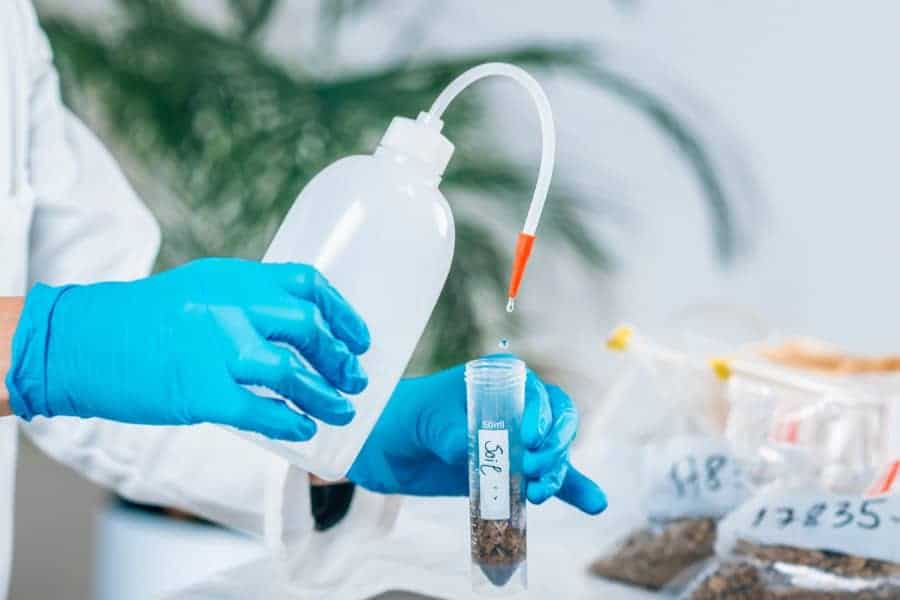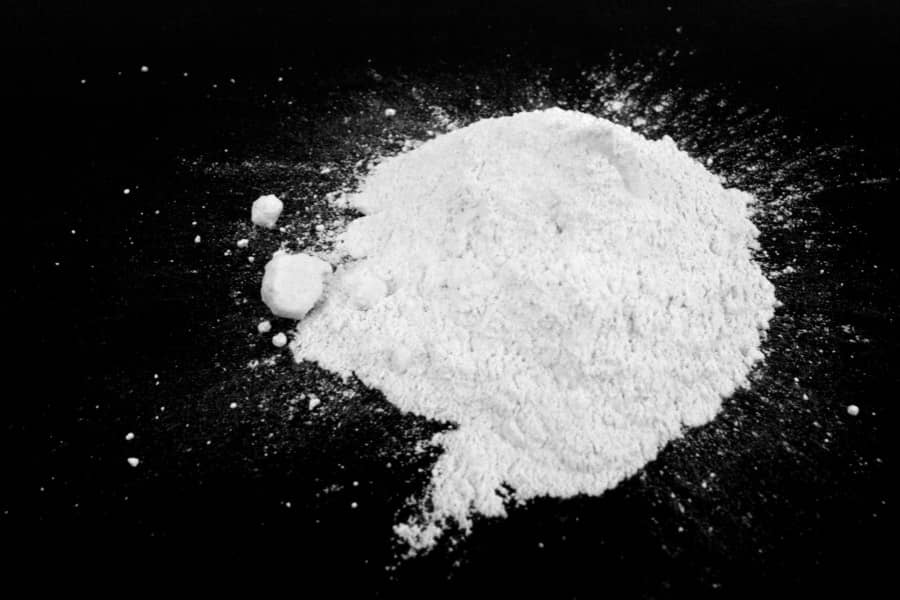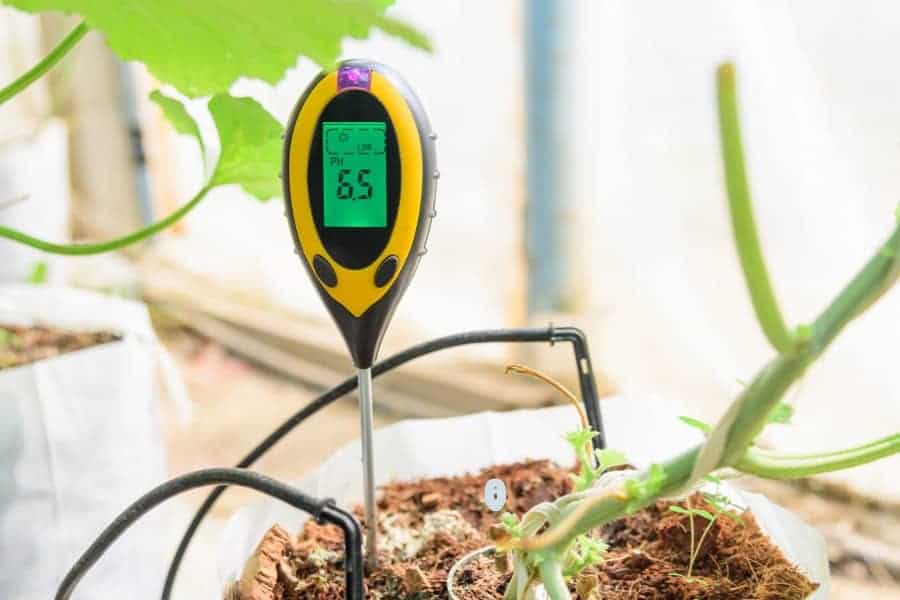
Garden lime is an efficient and inexpensive solution to raising soil pH. It is commonly applied in lawns and gardens for neutralizing acidic soil. If you are new to garden lime, and wondering how to use it effectively, here I’ve shortest answer.
To use garden lime, first, calculate the amount of garden lime required for your soil, depending on the current pH and soil type. For established lawns, aerate the ground and then apply lime using a drop spreader. For vegetable gardens, evenly spread the required lime and till it into the soil.
To know more about garden lime and its application in detail, such as when and how much to use, continue reading the article. In the subsequent sections, we have also shared precautions you must take into account when dealing with garden lime.
Gardening With Lime: What It Is and How It Helps?
Garden lime is a soil additive made from limestone rock, primarily used to increase alkalinity levels and offset soil acidity. For landscape purposes, it comes in two forms – powdered and pelletized.
Agricultural lime contains calcium carbonate and magnesium carbonate, which are essential vital nutrients for optimal plant growth. Besides altering the pH levels, garden lime helps nourish healthy bacteria. However, do not mistake lime as a substitute for fertilizers.
Most plants prefer a pH between 5.5 and 6.5. When the soil gets highly acidic, it limits the plant’s ability to absorb essential macronutrients, often resulting in pale leaves and stunted growth. This issue can be fixed using specialized fertilizers. However, that is an expensive route to go.
Applying garden lime is probably the most affordable and efficient way to lower soil acidity and stabilize the pH balance. Although there are different varieties of lime available, for gardening purposes, we strictly suggest buying lime that is sold as garden/ agricultural lime or dolomite lime.
If you don’t have time to research reliable products, go for Jobe’s Additive De-Acidifier – a highly-rated and best garden lime available on Amazon.
How To Tell If Your Garden Needs Lime?
Lime is only required to be put into the soil when the pH levels have dropped to a degree where it’s inhibiting plants from absorbing nutrition, thus affecting the overall growth.
One common sign of low pH levels in gardens is an abundance of acidic soil loving plants, such as lawn moss and weeds. When soil becomes too acidic, it not only makes plants suffer but limits the effectiveness of fertilizers and herbicides.
Soil Testing Is Important

Testing the soil for pH levels is the sure-shot way to determine if your lawn needs a lime treatment.
You can perform a soil test using an over-the-counter soil pH test kit or order a professional lab report by sending a soil sample to your local county extension office.
At-home soil pH test kits are usually inexpensive. However, they aren’t entirely accurate and, most of the time, won’t give detailed information necessary to determine the amount of lime your garden needs. These are mainly preferred for regular monitoring between annual or biennial lab tests.
Whereas getting a soil test done from an agricultural extension in your area will give you the most reliable and accurate results.
Take Precaution When Applying Garden Lime
Garden lime is only beneficial when used in the right amount. Excessive use of lime can make the soil overly alkaline, raising its pH out of balance and, consequently, causing damage to the crops.
NOTE: Whether the soil pH is too high (alkaline) or too low (acidic), in both cases, your plants will suffer from decreased ability to absorb the available nutrients from the soil. The right balance is crucial.
Moreover, too much calcium carbonate in the soil causes the ground to dry out quickly, affecting the irrigation cycles. Since it’s easy to over-lime your lawn, use the substance responsibly.
Best Time to Lime Your Lawns and Gardens
If you are wondering what is the ideal time to apply garden lime, it’s during fall.
Most gardeners prefer applying lime in fall because of the rain, snow, and upcoming winter moisture to reduce the risk of soil drying out.
Most importantly, it allows the lime several months to break down and dissolve into the soil before the spring plantation begins.
But what if you missed the autumn window and your garden requires the lime application? Spring is another best time to add lime to your garden and reap the benefits.
NOTE: Avoid applying lime during frosty weather or when it’s hot and dry outside.
How Much Lime Does Your Lawn Need?

To ensure optimal results and avoid any repercussions of overuse, lawn owners must calculate the required lime amount and apply it accordingly.
The amount of lime your soil needs depends on the initial pH and soil type, followed by the desired pH. You cannot determine these key details without performing a soil test.
At-home soil pH test will only reveal current pH levels but not the soil type. This is why most gardeners prefer laboratory tests, as they come with specific recommendations tailored to meet your soil’s requirements.
Soil type is an important factor that dictates the amount of lime required to lower the acidity of a lawn. Seemingly, heavier soils require more lime for the same degree of pH modification. For example, clay soil takes more lime than sandy soil to achieve the same results.
Most regional lawn grasses prefer pH between 5.8 and 7.2. Warm-season grasses can tolerate slightly lower pH, whereas cool-season varieties prefer slightly higher pH for optimal growth.
It’s hard to judge the lime requirement of a lawn without looking at its soil test. But to give you a rough idea, here are some estimations for 1,000 square feet of lawn area.
- If your current soil pH is 5.5, apply 30 pounds of the garden lime for sandy soil, 80 pounds for loam, and 100 pounds for clay soil.
- Similarly, if the current pH is 4.5, take additional 20 pounds for sandy soil, 50 pounds for loam, and 90 pounds for clay soil.
You can also use the lime lawn calculator by The National Gardening Association to help you predict an acceptable amount.
NOTE: Avoid adding more than 50 pounds per 1,000 square feet in a single application. For best results, better split larger quantities into smaller applications separated by several weeks.
Best Way To Apply Lime
Lime application is widely used in lawns and vegetable gardens, so we have provided methods for both landscapes below. Depending on your requirements, you can navigate to the appropriate section.
How to Perform Lime Lawn Treatment
Dolimite lime is the most commonly used lime for lawn grasses and is available in both pelletized and powdered forms. However, both are considered equally effective when it comes to neutralizing lawn pH levels.
The best time to lime a lawn is usually around fall and early spring. Ideally, lime should only be applied to a dry lawn. Avoid liming when you have wet grass or standing water.
It’s believed that lime is most effective when mixed with the top 5 inches of soil. So before liming, make sure to aerate the ground. For an established lawn, you can use a core aerator to open up spaces for lime to penetrate the soil.
Use a tiller or a drop spreader to apply lime to the grass. Ideally, apply half of the recommended amount of lime by walking back and forth horizontally and spread the other half by walking vertically.
Putting lime in such a criss-cross pattern helps evenly distribute the substance and ensures proper coverage of the entire yard.
Next, lightly water your lawn to help the soil absorb the lime and wash off any particles from the grass blades to prevent leaf burn.
How to Put Lime on Vegetable Gardens
Fall is the ideal time to apply lime to your vegetable gardens. Once you have calculated the recommended lime amount for balancing your soil acidity, here is what to do next:
First, sprinkle the lime on your gardens using a hand shovel or a garden spreader. The latter, however, ensures an even application. Next, till the soil for 8 to 12 inches to incorporate the lime into the ground to deeper root systems.
Use a hand rake or rototiller for garden beds to gently till the top 3 or 4 inches of soil. Next, break up any clumps and even out the ground. Lastly, you can water your gardens to enable the soil to soak in the lime.
Why Does Soil pH Keeps Changing?

Soil pH is a measure of soil acidity or alkalinity. The inherent factors that majorly affect the soil pH include a loss of organic matter or soil minerals, surface layer erosion, and the addition of nitrogen and sulfur fertilizers or other soil amendments.
Areas with heavy rainfall often experience a drop in pH level due to the rainwater leaching away the calcium compound from the soil. Over the long haul, if it continues to happen, it will cause the soil to be highly acidic.
A gradual change in pH can also occur from regular fertilization and increased activity of beneficial soil microorganisms. However, it’s often natural, so as long as the pH isn’t dropping below severity levels, you don’t have to worry about it.
Frequently Asked Questions
Q. Is garden lime good for all plants?
Plants that require slightly acidic soil shouldn’t be exposed to the lime application.
Garden lime isn’t a standard fertilizer and should only be used when required. Its primary role is to make the soil more alkaline, so unless you want to lower your soil’s acidity, do not use lime.
Q. Can you put too much lime in your garden?
Yes, it’s possible to over-lime a garden. In excessive amounts, garden lime will raise the pH to a level where plants can’t absorb essential nutrients from the soil.
Q. How long does it take for lime to work?
Lime can take up to several months to completely break down and dissolve into the soil. However, within the first few months of application, you may see notable changes in your soil pH.
Although it’s a slow process, tilling the lime into the soil, instead of just sprinkling it on the surface, will show results faster.
Q. Can you use lime and fertilizers together?
Don’t apply lime when fertilizing or vice versa. Putting garden lime and fertilizers together into the soil may trigger chemical reactions, putting your crops at risk.
Q. Is garden lime harmful to pets or humans?
Lime, in general, isn’t inherently toxic. However, that doesn’t mean it’s allowed to consume. One should always wear a heavy-duty mask when working with lime, especially powdered lime. Also, to be on the safe side, keep your pets away from the limed area for at least some time.
Final Words
Garden lime is undoubtedly a beneficial soil amendment for restoring soil pH balance. We hope with the information shared above, now you are well aware of the lime and how to use it effectively in lawns and vegetable gardens.
